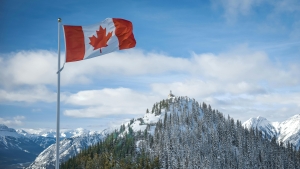Clean Energy Canada | Carbon pricing and its impact on Canadians
August 19, 2024

Carbon pricing works by creating a price signal that incentivizes people and businesses to choose cleaner technologies or practices. In 2023, more than 250 of Canada’s leading economists signed a letter pointing to the effectiveness of carbon pricing at reducing emissions with minimal cost to Canadians and the economy.
There are several carbon pricing systems in place in Canada. The following summarizes the most prominent of those systems and explores the impact on Canadian households.
The federal consumer carbon price
How it works:
- The federal carbon price applies in all provinces except B.C., Quebec, and the Northwest Territories (as they have their own systems).
- The carbon price is revenue neutral, which means that the federal government does not keep any of the money collected. For the Yukon and Nunavut, the proceeds are returned to their governments. For all other provinces, the money is returned to eligible Canadians, predominantly via quarterly rebate cheques.
Its impact:
- In 2024, the carbon price added 17.6 cents to the price of gasoline, around 3 cents more than in the previous year. However, the vast majority of households (80%) get more back then they pay at the pump thanks to federal rebates, with only the wealthiest share of Canadians paying slightly more overall. The government of Canada has a carbon rebate calculator that helps households see how much they pay versus how much they receive in rebates.
- In 2022, Canada’s emissions would have been approximately 19 megatonnes higher without carbon pricing systems (including industrial carbon pricing)—almost the equivalent of Manitoba’s emissions that year.
- The carbon price is responsible for just percentage points of a given year’s inflation increase according to the Bank of Canada.
- Carbon pricing is designed to encourage the adoption of cleaner technologies. A family that adopts a few common clean energy solutions—including EVs and heat pumps—could knock $800 off their monthly energy bills (including equipment costs), compared to one that is largely reliant on fossil fuels.
Industrial carbon pricing
- Most provinces have their own industrial carbon pricing systems that encourage industries to reduce emissions.
- The provinces and territories that don’t (Manitoba, Nunavut, Prince Edward Island, and the Yukon) use the federal industrial carbon price, known as the Output-Based Pricing System.
- Proceeds from the federal industrial carbon price are returned to provinces to support industrial projects to cut emissions.
- By 2030, industrial carbon pricing (which includes various types of large-emitter trading systems across Canada) is projected to contribute between 23% and 39% of avoided emissions from all currently implemented climate policies, according to the Canadian Climate Institute.
The B.C. carbon tax
- Implemented in 2008, B.C.’s carbon tax was the first in North America.
- Unlike the federal version, B.C.’s carbon tax returns a portion of the money collected directly to medium- and low-income households via climate action tax credits, and B.C. maintains one of the lowest total tax rates in Canada (revenue collected through a carbon tax can also be used to lower other taxes).
- In its 2024 budget, the province increased the income threshold for receiving the tax credit and announced that all revenue from the year’s increase will be returned to British Columbians.